Why this new Marine Corps unit is training with autonomous narco-subs
- By Hope Seck
Share This Article
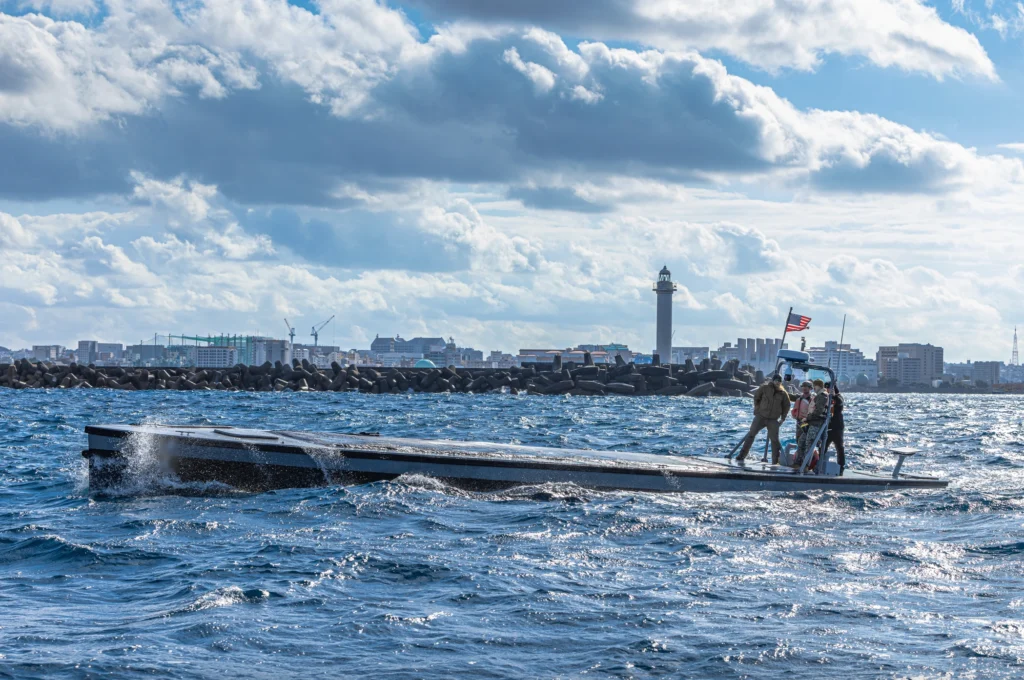
They’re called “autonomous low-profile vessels,” or ALPVs, designed to draft almost flush with the water’s surface and operate without a crew. And they’re the newest warfighting tool in the arsenal of the 12th Marine Littoral Regiment, one of the highly specialized new units the Marine Corps has activated to operate in the shallow coastal regions of the Pacific and elsewhere around the world.
The Okinawa-based 12th MLR is the second of at least three planned Marine littoral regiments to be established in key Pacific hot spots. Its activation was complete in March with the addition of its final subordinate element, the 12th Littoral Combat Team. The Marine Corps, which has held off criticism from Congress and the retired ranks in its pursuit of its disruptive Force Design 2030 warfighting strategy, has shown a propensity to equip these new units with the service’s newest and most battle-relevant tools.
The 3rd Marine Littoral Regiment, established in its current form in Hawaii in 2022, recently became the Corps’ first unit to receive the Marine Air Defense Integrated System, or MADIS, a highly anticipated mobile counter-drone weapon armed to the teeth with a 30mm cannon, Stinger missiles, and a machine gun. That unit was also the first to get the new Navy-Marine Expeditionary Ship Interdiction System, or NMESIS, a powerful anti-ship missile system designed for coastal defense.
NMESIS saw its first deployment in late April, heading to the Philippines for the annual Exercise Balikatan in the cargo hold of Air Force C-130s, where Marines with 3rd MLR quickly established an operating position for the system.
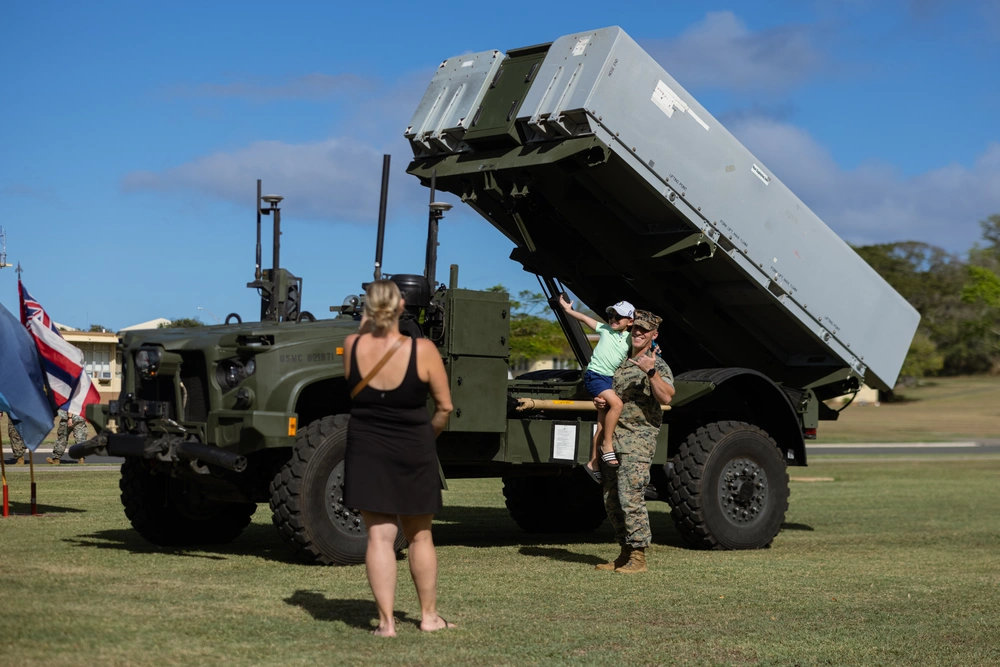
How 12th MLR will use its high-tech new narco-subs – a term that refers to semi-submersible vessels – remains to be seen.
In a round-table briefing with reporters in April, 12th MLR Commanding Officer Lt. Col. Peter Eltringham described the vessels as used for logistics purposes – a discreet way to deliver food, equipment and supplies to the MLR’s 2,000 Marines as they operate on the Corps’ expeditionary advance base in Japan’s Sakashima Islands off of Okinawa and elsewhere throughout the region.
The narco-subs, Eltringham said, “can be configured to deliver multiple variations of supplies – food, water, fuel, ammunition, medical supplies, repair parts, and other equipment. It’s absolutely critical to have this capability and to do it at scale.”
Information released by Leidos, which designed the vessels and delivered them to the Marine Corps in 2023, reveals more about their capabilities. According to the company, the vessels can transport a logistics payload of up to five tons over a range of 2,000 nautical miles and can operate autonomously or given a course to follow.
“The prototypes we’ve delivered will help create new disruptive logistics capabilities for the Marine Corps,” Dave Lewis, Leidos’ senior vice president for the Sea Systems Business Area, said in a release last year following the vessels’ participation in an Army Project Convergence training exercise. “Its low profile and long range are intended to help the vessels achieve a higher mission success rate supporting dispersed Marine fire units than conventional methods.”
Related: Marines deploy new system to take out ships in the Pacific
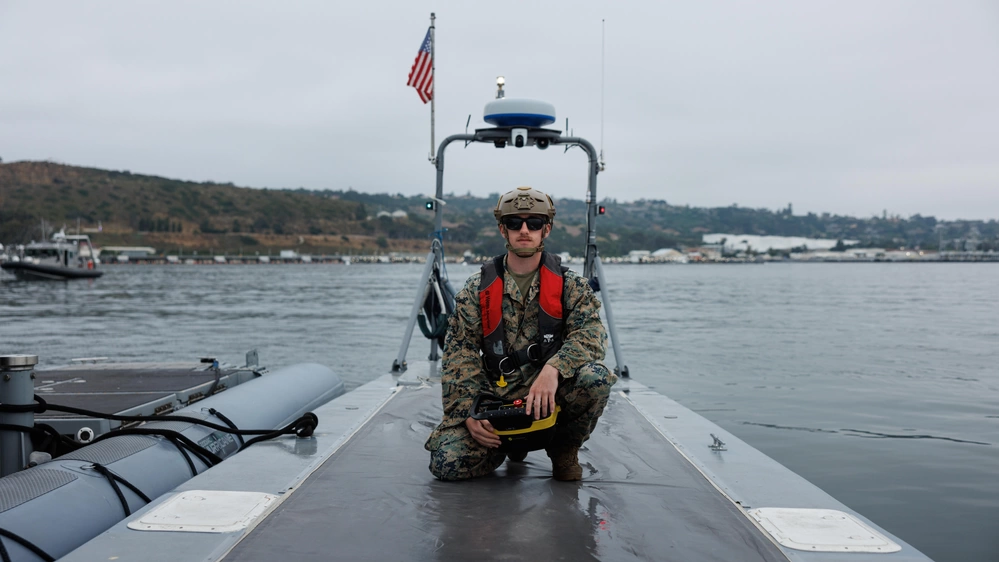
Leidos transferred two of the vessels to the Marine Corps Warfighting Lab, which has been working with 12th MLR to develop the capability. Eltringham called the vessels at the “left level of technological maturity,” alluding to their early stage in the maturation process.
He added that the Marines in the units were now validating that the ALPV works as intended and learning how to best employ it.
“We want to make sure we’re able to take a deliberate approach toward our ability to innovate,” Eltringham said.
Having low-profile resupply vehicles underscores one of the key differences between the littoral regiments and other conventional Marine Corps units: Designed to operate in hotly contested areas, these units are incorporating subtlety into routine ops.
“I want them to be small teams; I want them to be hard to find,” Eltringham said of the dispersed teams within 12th MLR. “I want to make sure that we are able to ensure that we are delivering the sensing and the strike and the sustainment capabilities right across our expeditionary advanced bases, no matter their size, right into the terrain that ensures that we have the broadest, most impactful area of operations.”
Following initial exercises and testing, Eltringham said he thought the ALPV was “a fantastic piece of gear.”
“I’d like to get as many of those as possible,” he said, “and so we stay in communications with Headquarters Marine Corps and the purchasing agents … to provide the feedback that they need to validate not just the requirement, but the dollars that are going to go against it.”
Feature Image: U.S. Marines operate an Autonomous Low-Profile Vessel at Naha Military Port, Okinawa, Japan, Jan. 17, 2025. Marines with 12th Littoral Logistics Battalion executed the first ALPV rehearsals in Okinawa, increasing 12th LLB’s operational readiness and amphibious capabilities. The Marines are with 12th LLB, 12th Marine Littoral Regiment, 3d Marine Division. (U.S. Marine Corps photo by Lance Cpl. Rodney Frye) (Details on the vessel have been blurred for security reasons)
Read more from Sandboxx News
- NATO can’t ignore the Russian military’s faster, more dangerous kill chain
- F-16s in Ukraine are putting in the work, according to Ukrainian pilot
- An encounter with St. Elmo’s fire before Operation Just Cause
- How close are the Colonial Marines from ‘Aliens’ to actual Marines
- A CIA officer’s 5 favorite spies from TV and movies
Related Posts
Sandboxx News Merch
-

‘AirPower’ Classic Hoodie
$46.00 – $48.00 Select options This product has multiple variants. The options may be chosen on the product page -

‘Sandboxx News’ Trucker Cap
$27.00 Select options This product has multiple variants. The options may be chosen on the product page -
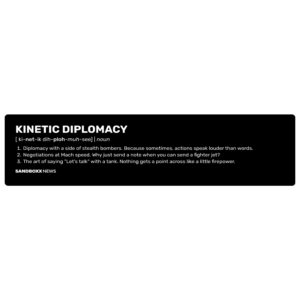
‘Kinetic Diplomacy’ Bumper Sticker (Black)
$8.00 Add to cart
Hope Seck
Hope Hodge Seck is an award-winning investigative and enterprise reporter who has been covering military issues since 2009. She is the former managing editor for Military.com.
Related to: Military Affairs
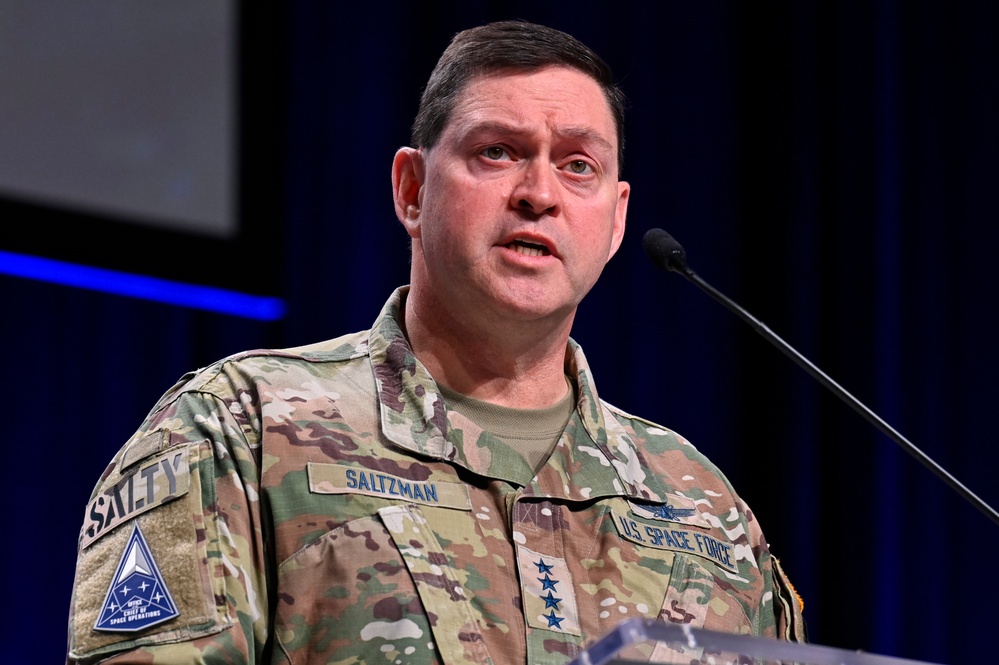
Dogfighting in space? Not too far-fetched, Space Force chief says
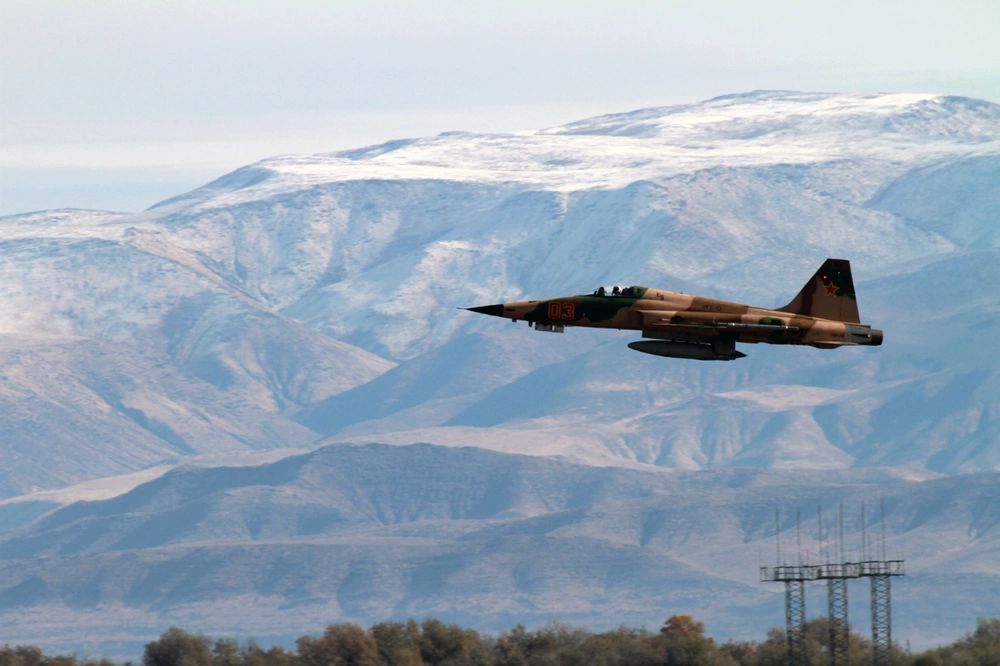
New master’s degree will train Top Gun pilots on foreign adversaries and space warfare
Sandboxx News
-

‘Sandboxx News’ Trucker Cap
$27.00 Select options This product has multiple variants. The options may be chosen on the product page -

‘AirPower’ Classic Hoodie
$46.00 – $48.00 Select options This product has multiple variants. The options may be chosen on the product page -

‘AirPower’ Golf Rope Hat
$31.00 Select options This product has multiple variants. The options may be chosen on the product page -

‘Sandboxx News’ Dad Hat
$27.00 Select options This product has multiple variants. The options may be chosen on the product page
